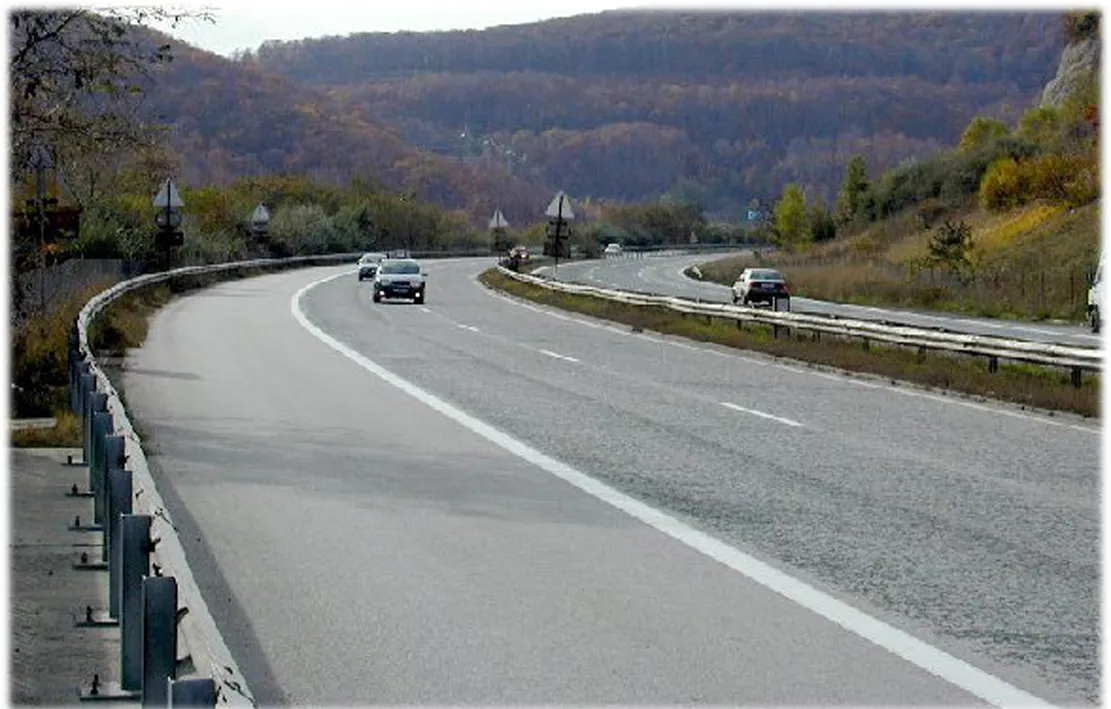With traffic flows on the increase, Serbia needs to improve its road network and safety record, reports Gordon Feller. Serbia's road network needs to upgrade its road system against the backdrop of increased traffic flows. Serbia is crossed by segments of the important Trans European network (TEN). Corridor X with its branches Xb (Belgrade-Budapest) Xc (Nis-Sofia), and Xd (Nis-Presevo), represent the most important transit routes in the Republic, connecting Austria/Hungary, Slovenia/Croatia, and Bulgaria/Ma
February 23, 2012
Read time: 6 mins

With traffic flows on the increase, Serbia needs to improve its road network and safety record, reports Gordon Feller.
Serbia's road network needs to upgrade its road system against the backdrop of increased traffic flows. Serbia is crossed by segments of the important Trans European network (TEN). Corridor X with its branches Xb (Belgrade-Budapest) Xc (Nis-Sofia), and Xd (Nis-Presevo), represent the most important transit routes in the Republic, connecting Austria/Hungary, Slovenia/Croatia, and Bulgaria/Macedonia/Greece/Turkey.On this Corridor in Serbia, there are 792km of roads. The entire road network extends for some 38,600km in central Serbia, including 15,500km of primary and secondary roads (and approximately 634km of motorways and semi-motorways), together with just over 23,000km of tertiary, or local, roads.
A recent survey revealed that while 30% of the network was found to be in good condition, primarily main and regional roads, 53% of the network was in poor or very poor condition. The comparative figures for Croatia and Bosnia and Herzegovina, respectively, are 32% and 22%, poor or very poor, and 43% and 22% poor or very poor respectively.
Traffic flows on the Serbian road network are growing steadily, with increasing congestion in and around the main urban areas. Average Annual Daily Traffic (AADT) on the national road network is fewer than 8% annually each year. This level of demand growth is consistent with that observed on the 'core road network' across South East Europe.
The total fleet has been increasing by an average annual rate of just over 4% since 1999. although actual growth is likely to be much higher in and around the main urban areas where incomes have been growing faster. The average motorisation rate is now estimated at about 235 vehicles per 1,000 inhabitants, with an average age of 15 years.
In addition, a survey of user perception of the quality of the infrastructure reveals that Serbia scores poorly compared to regional comparators. The Global Competitiveness Report, published annually by the
Road safety concern
Despite a recent minor drop in the total number of fatalities, road safety remains a major concern in Serbia. The latest available data for 2007 shows a total of 16,585 road accidents on Serbia roads with 962 fatalities. Whilst the fatality rate has improved to nearly five casualties per 10,000 vehicles, an improvement from the 12 casualties per 10,000 vehicles in 1998, it remains about five times higher than that of the best performingApart from the human losses, the social cost of these accidents has been estimated to cost €980 million per year, based on the 2005 figures.
The new Government has stated it wishes to develop and complete the core road infrastructure on Corridor X within the next four years, and has requested the assistance of the
Increasing transport efficiency and improving traffic safety along road corridors requires a focus on adequate road maintenance, implementation of traffic safety measures (e.g. safety engineering and audits), enforcement of road safety regulations, removal of non-physical barriers (e.g. unlawful road side stops) and reducing transit time at border crossings.
The completion of the upgrading of the road infrastructure on these two section represents the last 'missing links' in the completion of Corridor X in Serbia. However, the 98km of the section of corridor between Niš and the border with Bulgaria at Dimitrovgrad (Corridor branch-Xc) and the section between between Leskovac and the Macedonian border (Corridor Xd) are provisionally estimated to €1.2 billion. In addition to the usual due technical, economic and safeguard diligence, the World Bank is uniquely placed to assist the authorities in devising an implementation plan for the entire programme in a fiscally sustainable manner.
The project's key objective is to increase transport efficiency and improve traffic safety on the two sections of Corridor X, between Nis and Dimitrovgrad and Leskovac and Presevo respectively, and also strengthening the management of road safety in Serbia. The improvement of these two road corridors through the construction of two sections of motorway will ultimately support local and regional socio-economic development, which is a key objective for the Government.
The following components have been identified for the programme and the World Bank financed project:
Component 1: The M-1 road to FYR Macedonia (E75) - Corridor Xd. This component involves upgrading of the existing road to motorway for a length of 96.51km running between Leskovac and the border with the FYR of Macedonia (Corridor Xd). The intervention involves the construction of a motorway on a new alignment for about half the length and a widening of the existing road for the remaining half. It crosses difficult terrain and will include five tunnels: 1,804m, 1,112m, 325m, 200m, and 150m. Estimated total cost is €600 million;
Component 2: The M 1-12 Road to Bulgaria (E80) - Niš - Dimitrovgrad - Corridor Xc. This component involves the construction of a motorway on a new alignment for a length of 83km from Prosek to the Bulgarian border. It will cross very difficult terrain and will include 12 tunnels: 1,000m, 916m, 550m, and 347m, the others below 251m, and there are long and steep downhill gradients. Estimated total cost here is €600 million;
Component 3: Road Safety: This component will support plans for the establishment of a Lead Agency for Road Safety; creation of a road safety performance framework; developing and launching a national road safety strategy; and preparation and piloting of multi-sectoral road safety pilots.; and
Component 4: Institutional Capacity Building and Implementation Assistance, which will include consultant services for the supervision of the civil works on the two sections of motorway, and other necessary institutional capacity building and implementation assistance.








